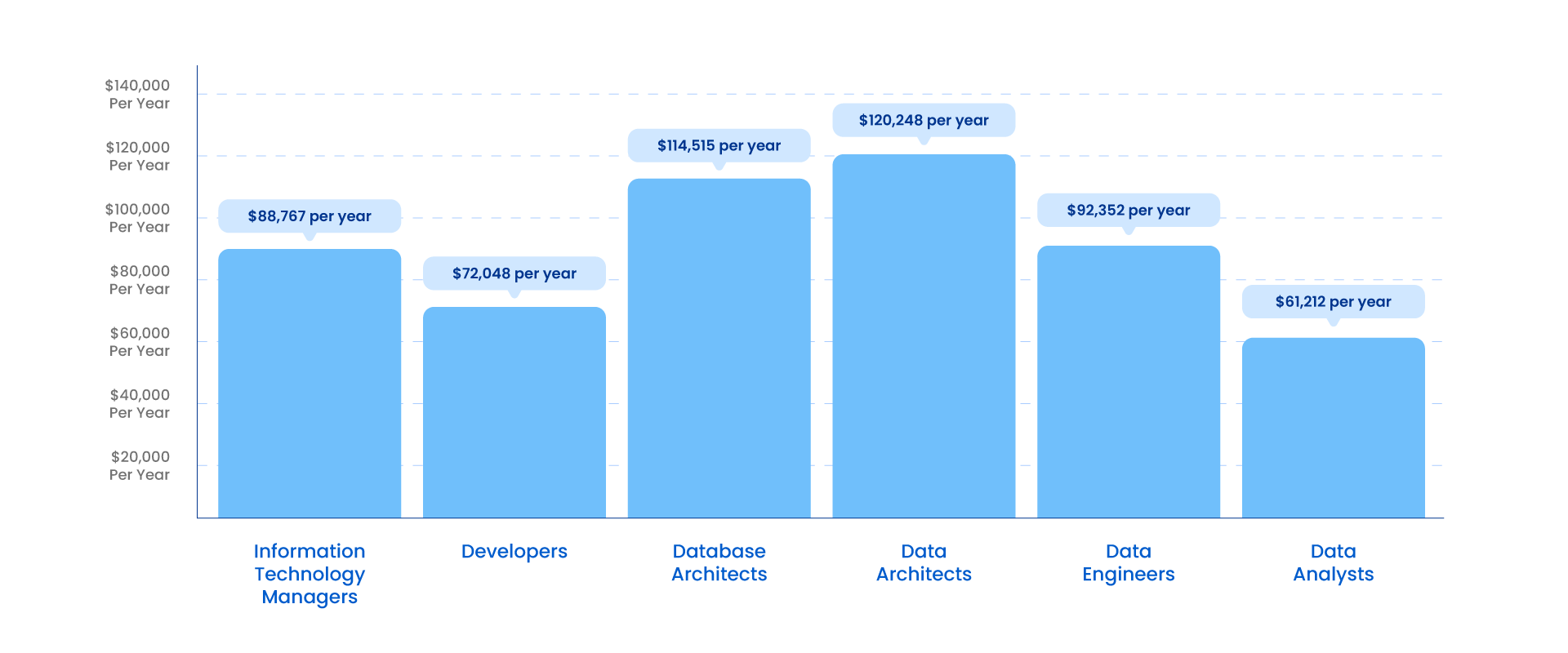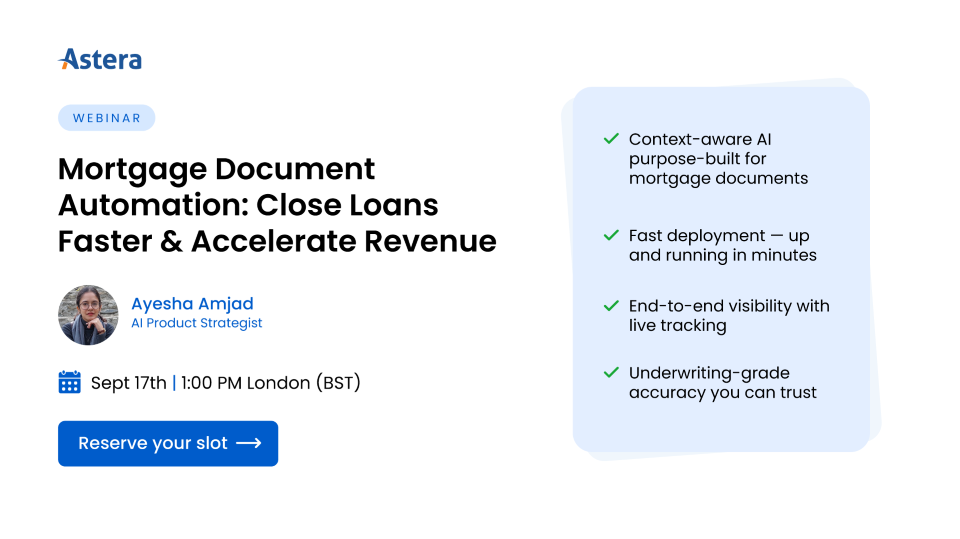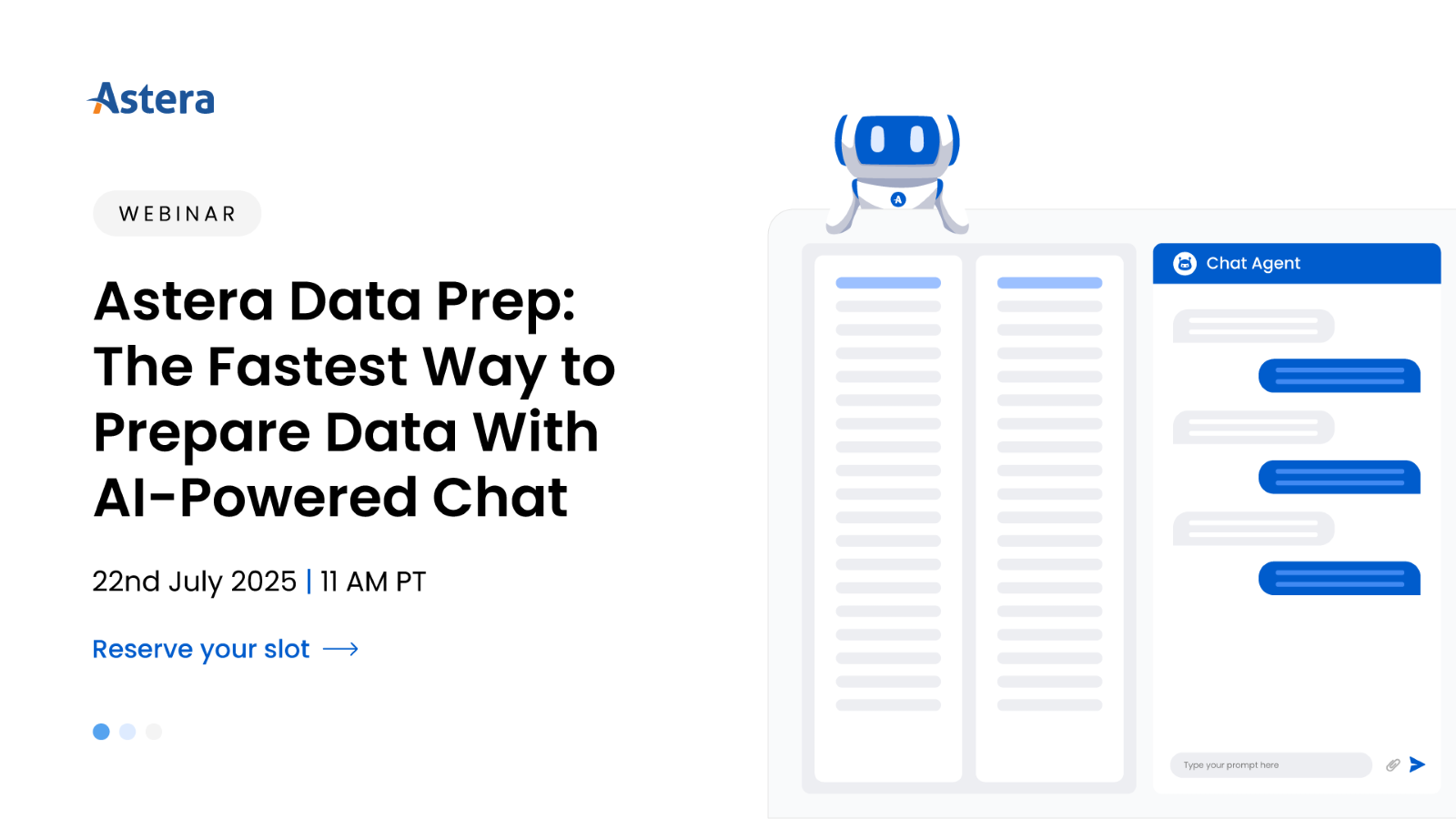
Everything You Need To Know About The Cost Of Building A Data Warehouse
Suppose your organization has reached a point where the best approach to analyze your data and make informed decisions is through a data warehouse. Many organizations design and build a data warehouse for business intelligence and data management to gain a competitive edge in the market.
With all your business data aggregated in a centralized repository serving as the single source of truth, reporting becomes much more powerful, eventually leading to better, more profitable decisions for your organization.
When launching a data warehousing initiative within your organization, you must address several questions. Which tools should you use? Should you build or buy a data warehouse solution? Or should you go for data warehouse outsourcing? What would be the appropriate data warehouse architecture for your organization’s needs?
Among these, one of the most important questions is: How much will building a data warehouse for your organization cost? Calculating the average cost to build a warehouse can be challenging, especially when many factors and moving parts are involved in the DW life cycle.
In this blog post, we have broken down the true cost of building a data warehouse and how you can determine the ROI of your warehousing initiative.
How to Estimate the Cost of Building a Data Warehouse
Just like any other project, there are types of costs associated with building a data warehouse: variable and fixed expenses. Before you start your project, you need to have a good idea about what your fixed and variable expenses. If you will opt for a traditional on-prem data warehouse, then there will be a large chunk of fixed costs including the initial investment in servers, storage devices. It will also include the one-time cost of setting up this infrastructure including network configuration, data center setup (if applicable) etc.
However, if you opt for a cloud data warehouse such as Snowflake, Amazon Redshift of Google BigQuery, then most of your cost would be variable. It would typically include cloud computing costs that are based on the amount of storage used, computing resources consumed, and data transfer, plus the data storage costs and data transfer costs if you are moving data between different systems or across networks.
Then there are the typical costs involved such as business and intelligence costs and labor costs. Your labor costs would be higher if you opt for an on-premises solution and the type of ETL software you use. Cloud platforms are easier to setup and if you opt for a code-free ETL tool such as Astera Data warehouse builder, then your costs will go down significantly.
Cost Components in Building a Data Warehouse
First, let’s discuss the key components that affect the cost of a data warehouse. Since every data warehouse project is different, the cost of each component will vary.
Here is a breakdown of the cost components of a data warehouse:
1. Build Your Data Warehouse in the Cloud or On-Premises
The first decision is hosting your data warehouse on-premises or on the cloud. On-premises storage requires purchasing and maintaining all the hardware and software yourself. With a cloud-based solution, you have the cloud services provider to handle everything.
With an on-premise solution, the benefits are:
1) greater security.
2) improved control over how and where your data is stored.
3) accessing and retrieving your information without relying on high-speed internet and connectivity.
However, on the flip side, several overheads involve high upfront investment, increased maintenance cost, higher risk of data loss, and limited scalability.
The cloud, on the other hand, is the go-to storage choice for most enterprises. A 2021 Flexera report suggests that 87% of enterprises with a data warehouse are either experimenting with, currently using, or planning to use the cloud for their data warehouse projects.
This is because cloud-based data warehouses are simpler to set up, easier to maintain, and don’t require any on-prem storage space. You only pay for what you use and have the luxury to scale up or down the storage and computational resources. A warehouse construction cost calculator makes it easier to evaluate your options.
2. ETL: Manually Writing Code vs. ETL Tool
Extract, Transform, Load (ETL) involves moving data from the source location(s) to the target data warehouse. This includes the integration, migration, transformation, and synchronization of data to your warehouse from various data sources.
ETL is a core component of any DW implementation, and the cost depends on whether you write your own code or opt for an ETL tool.
Writing custom SQL for your ETL processes allows tailoring the data movement to the warehouse per your business needs. But it comes with huge time and budget considerations.
You will need a dedicated team of ETL developers to hand-code the ETL flows. They must also coordinate with the data modelers and DW experts to construct ETL pipelines. This can take months or years.
As opposed to this, choosing a data warehouse automation tool with built-in ETL functionality, such as Astera DW Builder, enables you to build ETL pipelines quickly at a logical level.
Also, you can develop ETL pipelines at a fraction of the cost. Such tools are versatile and robust. They support various data sources and warehouse models, provide many transformation options, and offer process orchestration capabilities to load and sync incoming data to warehouses.
3. Business Intelligence and Reporting
Most data warehousing initiatives aim to improve decision-making through business intelligence (BI) and data analytics. This is why data warehouses are often paired with business intelligence tools to visualize data, unearth insights, and create reports for analyses. However, these BI and visualization tools come with a price tag too.
Businesses must choose an enterprise BI solution and use an open-source library like D3.js or Kibana for visualizations.
While open-source tools offer more freedom, there is a high cost of human resources attached to them. That’s because you need developers and data analysts to build visualizations. On the other hand, most enterprise BI tools, like Tableau and Microsoft Power BI, are intuitive and simple to use. Hence, there is little overhead other than the cost of the tool itself.
4. Human Resources
Whether using a data warehouse automation (DWA) tool or a custom coding method, you will need a qualified development team. A typical data warehouse development team involves ETL developers, data engineers, data analysts, data architects, information technology managers, and database administrators.
Each resource plays a different role in the project. The type and number of people you need will vary based on your chosen approach. For example, when opting for an off-the-shelf DWA tool, you will need fewer resources in your development team.
Still, suppose you are going for a custom-coded solution. In that case, you will need a large team comprising several ETL developers, data engineers, data modelers, and DBAs to work on the project.
5. Other Costs: Maintenance, Training, and Support
A data warehouse’s last but often forgotten cost component relates to maintenance, training, support (both technical and non-technical), and upgrades. In most cases, you have three options to manage these other costs:
- Hire an internal team that can handle maintenance, support, and training for the data warehouse.
- Outsource such services and tasks to a third party or vendor.
- In the case of a full-service cloud-based data warehouse, you can choose to add training and support to the monthly fee.
Your chosen approach depends on your unique requirements and budget, but each has advantages and disadvantages in different scenarios.
Data Warehouse Cost Estimation for Each Component
To help you estimate the cost of building a data warehouse, here is a breakdown of the average costs for each component listed above.
Note that these are just data warehouse cost estimates; the exact costs will depend on your project’s size and complexity.
1. Data Warehouse Storage Costs
Storage is perhaps the most expensive data warehouse component, especially when working with large amounts of data. Based on whether you are going with an on-premise or a cloud storage service, you will have different cost options.
When using cloud storage, you pay per gigabyte or terabyte of data and can scale your storage as necessary. Since there are no upfront investment or operational costs involved in the form of hardware, space, infrastructure, or on-site engineers, the only cost associated with the cloud is the amount you pay each month (or each year).
The most popular cloud storage solutions (such as Amazon Redshift, Microsoft Azure, and Google BigQuery) cost between $18.8 to $26.6 per terabyte (TB) per month ($225.6 to $319.2 per year).
On the other hand, you need to make some upfront investment for on-premise data storage. This includes setup and configuration costs for the hardware and infrastructure you will need to store your data. This will include server machines, storage disks, network accessories, and engineers who will manage and configure everything.
The upfront costs can start from as little as $3500. It can go up based on the volume of data and redundancy you need. Other than the upfront cost, the operational costs, such as electricity and on-site support and maintenance, can be $1000+ per month ($12,000 per year).
2. ETL & Data Integration Costs for Data Warehousing
For ETL, you can use open-source tools like SSIS to hand-code your own data integration solution. While this will not involve licensing costs, you must hire developers and data architects to develop this solution. Depending on the number of resources you need, custom-coded ETL pipelines can cost more than $100,000+ and months or years of development.
The costs will depend if you choose to go with a dedicated ETL tool, like Astera Centerprise, or a DWA solution with built-in ETL functionality, such as Astera DW Builder, or whether you are purchasing a fixed-price license or a variable-price pay-per-use model. In either case, the costs average between $100 to $4,000+ per month, depending on the tool and your requirements.
3. BI & Data Analysis Costs
The average business intelligence solution costs anywhere between $600 to $6,000 per year. You can find several BI tools in the market, such as Microsoft PowerBI, Tableau, Domo, Qlik, etc. Like with DWA tools, you can either pay a fixed license price for these tools or pay as per usage.
If you want a budget option, you can use open-source tools such as the ELK (Elasticsearch, Logstash, and Kibana) stack or D3.js. However, like with most open-source solutions, you will need technical resources to customize and maintain your visualizations and reports.
4. Labor Costs for the Data Warehousing Project
Earlier in this blog post, we listed the key types of human resources you will need in a data warehouse project. Here is a breakdown of the salaries of such resources:

- Information Technology Managers: $88,767 per year
- Developers: $72,048 per year
- Database Architects: $114,515 per year
- Data Architects: $120,248 per year
- Data Engineers: $92,352 per year
- Data Analysts: $61,212 per year
It is worth mentioning here that these are just average figures for such roles, and the actual rates will depend on the market rate in the region/country you are hiring the resources. You will also need to factor in costs such as recruitment and training.
5. Other Costs Related to the Data Warehouse
The cost of maintenance and support is usually difficult to estimate upfront. This might include fixing broken ETL flows when sources change, updating the data warehouse to integrate new systems, changing configurations for entities alongside regular testing, and others.
However, on average, businesses allocate between 56% to 72% of their annual data warehouse budget to maintenance and support. So, let’s assume you have a budget of $100,000 per year for your data warehouse initiative after it has been deployed and configured. In that case, $56,000 to $72,000 per year would be spent on maintenance, training, and data warehouse support.
In most cases, this involves the cost of the in-house technical team managing and maintaining your data warehouse. Like with the other cost components, the approach you use to build your data warehouse greatly impacts (cloud vs. on-premises, custom-code ETL pipelines vs. drag-and-drop interface, etc.) how much these other costs will be.
What is the Average Cost of Data Warehouse Implementation?
Using the breakdown we have provided above, here are the estimated (average) figures on the yearly cost of data warehousing implementation:
Storage (Cloud): $273 per TB yearly (at $22.7 per TB monthly).
Storage (On-premise): $12,000 yearly (at $1,000 monthly).
Business Intelligence/Visualization Software: $3,000 yearly (at $250 monthly).
ETL Tool: $24,600 yearly (at $2,050 monthly).
Human Resources: $268,079 per year (assuming that you need, at minimum, a database architect, a data analyst, and a data engineer).
Other Costs & Maintenance: $64,000 yearly.
Summing up these figures, the average cost of building a data warehouse with cloud storage is about $359,951 annually. With on-premise storage, it is about $372,279 per year. However, the true cost will depend on various factors discussed in the earlier sections. Therefore, the questions to ask when you are building a data warehouse are:
- How much storage do we need?
- Do we want to store my data on the cloud or on-premises?
- Should we build a data warehouse from scratch or buy a Data Warehouse as a Service (DWaaS) solution?
- Should we use a pay-per-use ETL tool or write our own custom solutions? Are there any considerations for building a real-time data warehouse?
- How many resources will we need to manage, maintain, and support our data warehouse project?
Based on your answers, the actual costs for building a data warehouse can be between $1,000 to $200 million annually.
Is Data Warehouse a Profitable Investment?
Let’s proceed to the ROI considerations for building a data warehouse. Before making such an investment, knowing the advantages of building a data warehouse and the possible returns is important.
A decade or so ago, the cost-benefit analysis of a data warehousing project was not very high. Back then, there were two key challenges. First, data warehouses were built from scratch, and on-premise implementation was the organizations’ only choice. This led to spending a lot of money on hardware and human resources.
Second, the failure rate of data warehousing projects was quite high. It would take development teams years and years to get the implementation right, leading organizations to spend millions with low ROI.
Today, the scenario is different. The cost of building a data warehouse is much less than what it used to be a decade ago. For storage, you can opt for the cloud to significantly reduce costs. Similarly, instead of having a dedicated team to write code and SQL queries for data models, ETL pipelines, and business intelligence suites, you can opt for industry-leading tools available at a fraction of the cost.
Using modern data warehouse tools, like Astera DW Builder, you can reduce costs to get started with a data warehousing solution. You spend less on infrastructure, human resources, and maintenance overhead and more on what matters, i.e., extracting hidden insights from your business data. This can mean the difference between success and failure.
While a data warehouse is a sizeable investment, it also promises high returns if done right. The business intelligence, analytics, and reports you source from a data warehouse are of great value. They allow you to make smarter, more informed decisions to drive your business’s success.
Astera DW Builder Reduces Data Warehousing Costs Impactfully
After looking at the various cost factors, adopting a powerful tool with agile data warehousing capabilities makes sense. It can mean the difference between success and failure for your modern data warehouse initiative. Are you looking to cut down on the project’s costs while ensuring higher quality of implementation? Then Astera DW Builder is the right choice for your technology stack.
Astera DW Builder is a unified platform for data warehouse automation and management. The software provides an all-in-one solution for creating dimensional data models, developing ETL pipelines, streamlining deployment to cloud data warehouses (such as Amazon RDS and Snowflake), and intelligently managing and maintaining your data warehouse.
Since DW Builder uses metadata-driven architecture to automate several EDW processes for you, your team needs to focus on what you require from the data warehouse rather than how you will build it cost-effectively.
Since the platform offers a no-code environment for development, it makes it possible to set up, configure, and implement your data warehouse with a small team, saving you from hiring a large workforce. In addition, Astera DW Builder offers a transparent, yearly subscription pricing model that helps you better manage and control your data warehouse costs.
Ready to cut down on your data warehousing services costs and try Astera DW Builder? Contact us today to schedule a demo or talk to our team.
[/fusion_text][/fusion_builder_column][/fusion_builder_row][/fusion_builder_container]




